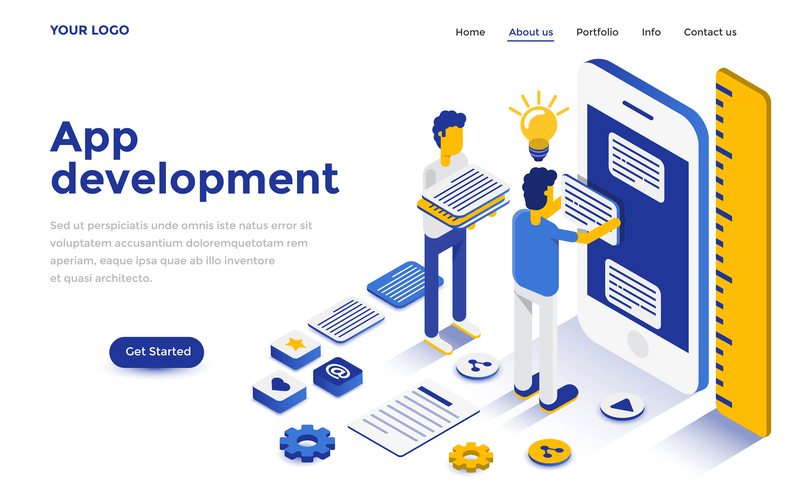Dev and QA teams cooperate to ensure a good level of test coverage is automated. Test acceleration provided by automation of test activities is critical to assure adequate quality coverage of products and services while reducing bottlenecks needed to meet the increasing pressure for fast releases. More mature continuous test automation strategies are better able to meet the competing needs of quality and speed. Continuous Delivery is the next logical step of Continuous Integration.

For the same reasons, finding all tests related to the changed component can be difficult. Incremental builds are rarely 100 percent reliable, and to prevent corruption of the incremental build, it’s a good idea to also keep a clean daily build. The obstacles for scaling a CI system relate to more people producing more code and tests. First, the probability of breaking the build increases with more people checking in code. Second, an increase in code size leads to a slower build and thus a slower CI feedback loop.
about Release Management and Continuous Delivery
At the base level in this category it is important to establish some baseline metric for the current process, so you can start to measure and track. At this level reporting is typically done manually and on-demand by individuals. Interesting metrics can e.g. be cycle-time, delivery time, number of releases, number of emergency fixes, number of incidents, number of features per release, bugs found during integration test etc. Beginner level introduces frequent polling builds for faster feedback and build artifacts are archived for easier dependency management.
Organizations, or specific applications within an organization, may match some of the characteristics for different levels. The figure below of Continuous Test Automation Maturity Model is a useful tool to determine the “best fit” for the maturity of an organization or application within an organization. By marketing the characteristics that https://www.globalcloudteam.com/ best match, gives a visual picture of the dominant level of maturity. This also is a quick way to determine areas to address to improve the level of maturity. At this level there is a high level or knowledge and confidence regarding continuous test automation. Dev and QA teams are tightly integrated to optimize knowledge and efficiency.
competition? Adopting a holistic approach to change and continuous
Continuous Delivery is all about seeing the big picture, to consider all aspects that affect the ability to develop and release your software. Cloud SQL Relational database service for MySQL, PostgreSQL and SQL Server. Software as a Service Build better SaaS products, scale efficiently, and grow your business. Smart Analytics Generate instant insights from data at any scale with a serverless, fully managed analytics platform that significantly simplifies analytics. Security Foundation Recommended products to help achieve a strong security posture.

The design and architecture of your products and services will have an essential impact on your ability to adopt continuous delivery. If a system is built with continuous delivery principles and a rapid release mind set from the beginning, the journey will be much smoother. However, an upfront complete redesign of the entire system is not an attractive option for most organizations, which is why we have included this category in the maturity model. Continuous Integration (CI) is a software practice that require developers to commit their code to the main workspace, at least once, possibly several times a day. Its expected that the developers have run unit tests in their local environment before committing the source code.
Build
Organizations have found it difficult to tailor CMM to specific goals and needs. CMMI is designed to make it easier for businesses to apply the methodology to specific uses than with CMM. In addition to offline model validation, a newly deployed model
undergoes online model validation—in a canary deployment or an A/B testing
setup—before it serves prediction for the online traffic. An ML system is a software system, so similar practices apply to help guarantee
that you can reliably build and operate ML systems at scale.
- At the base level in this category it is important to establish some baseline metric for the current process, so you can start to measure and track.
- This means that every commit to the workspace is automatically released to production, and thus leading to several deployments of your software during a day.
- Create an environment of personal safety where people can admit problems and learn to improve.
- While the above five levels of continuous test automation maturity provide a practical guide for defining maturity against characteristics of People, Process and Technology, they are not an absolute measure of maturity.
- The engineering team might have their own complex setup for API configuration,
testing, and deployment, including security, regression, and load and canary
testing.
Splitting changes into small increments, integrating them at least daily, and having the discipline to not break the build are all done by the individual developer. He needs the skill to work in small increments and keep his own copy of the system (or part of the system) working all the time. Learn how Agile principles applied to company culture can also help improve software product quality. Air Force he began formalizing his Process Maturity Framework to aid the U.S. Department of Defense in evaluating the capability of software contractors as part of awarding contracts. The principles and methods of Continuous Delivery are rapidly gaining recognition as a successful strategy for true business agility.
Software Engineer since 1997
Cloud Spanner Cloud-native relational database with unlimited scale and 99.999% availability. AlloyDB for PostgreSQL Fully managed, PostgreSQL-compatible database for demanding enterprise workloads. Google Cloud Deploy Fully managed continuous delivery to Google Kubernetes Engine and Cloud Run. As teams mature they will want some form of source code analysis to verify coding standards and rules compliance. The model also defines five categories that represent the key aspects to consider when implementing Continuous Delivery.

Each organization should develop a CDMM that suits its unique requirements. Moving to intermediate the level of automation requires you to establish a common information model that standardizes the meaning of concepts and how they are connected. This continuous integration maturity model model will typically give answers to questions like; what is a component? Automatic reporting and feedback on events is implemented and at this level it will also become natural to store historical reports connected to e.g. builds or other events.
Stage 2: Beginner CD with repeatable, managed processes
Similar to Build & Deploy, maturity in this category will involve tools and automation. However, it is also important to constantly increase the test-coverage of the application to build up the confidence in speed with frequent releases. Usually test involves verifying expected functionality according to requirements in different ways but we also want to emphasize the importance of verifying the expected business value of released features. At a base level you will have a code base that is version controlled and scripted builds are run regularly on a dedicated build server. The deployment process is manual or semi-manual with some parts scripted and rudimentarily documented in some way.
Testing the prediction service by calling the service API with the expected inputs, and making sure that you get the response that you expect. This test usually captures problems that might occur when you update the model version and it expects a different input. As the teams mature they will want their compiled, tested and verified artifacts to be archived and deployed to either a final QA server, and/or the production server for access by customers. I discovered InfoQ’s contributor program earlier this year and have enjoyed it since then! In addition to providing me with a platform to share learning with a global community of software developers, InfoQ’s peer-to-peer review system has significantly improved my writing.
Enterprise Release Management: Agile Delivery of a Strategic Change
This document is for data scientists and ML engineers who want to apply
DevOps
principles to ML systems (MLOps). MLOps is an ML engineering culture and
practice that aims at unifying ML system development (Dev) and ML system
operation (Ops). Practicing MLOps means that you advocate for automation and
monitoring at all steps of ML system construction, including integration,
testing, releasing, deployment and infrastructure management. The Capability Maturity Model (CMM) is a development model created in 1986 after a study of data collected from organizations that contracted with the U.S. The term “maturity” relates to the degree of formality and optimization of processes, from ad hoc practices, to formally defined steps, to managed result metrics, to active optimization of the processes.
